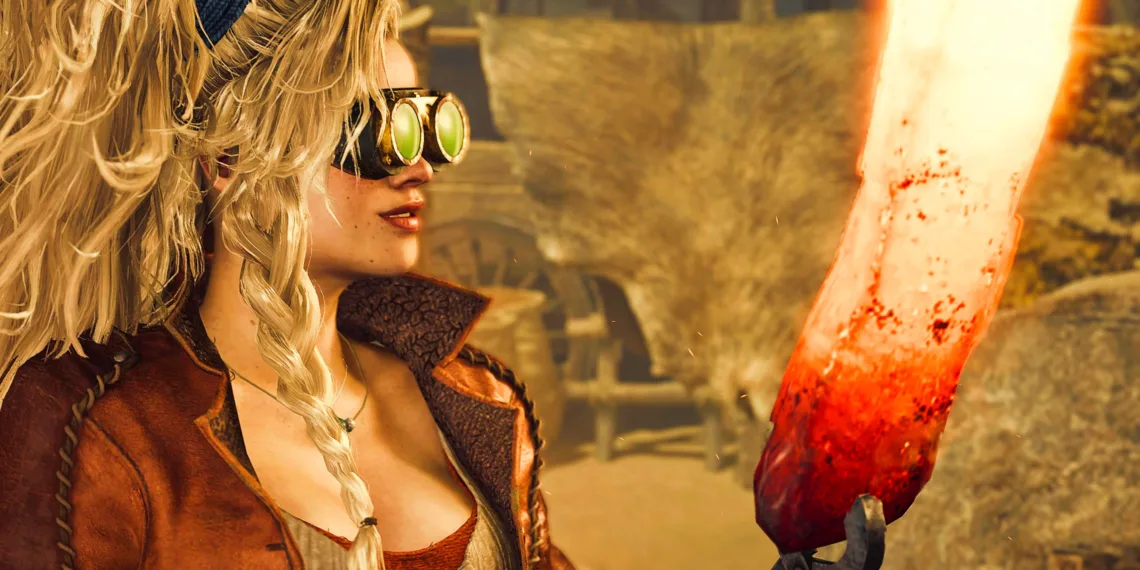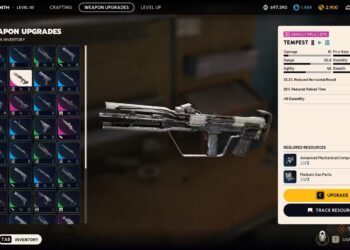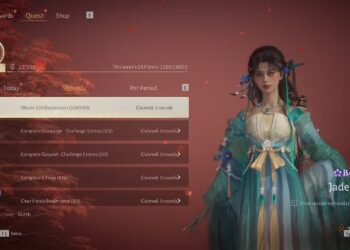Select Language:
When you first dive into Monster Hunter Wilds, or the Monster Hunter series as a whole, navigating the weapon upgrade system can feel overwhelming. While Wilds aims to be more approachable for newcomers—by simplifying various gameplay elements and introducing beginner-friendly monsters—its weapon and armor upgrade system remains intricate. Unlike many other games where character levels significantly influence strength, in Monster Hunter, it’s your ability to craft progressively powerful weapons and armor that truly defines your prowess as a hunter.
Imagine you’re a beginner who has tried out a few hunts and settled on a weapon type you want to master. You know the importance of upgrading your weapon to stay competitive, but the moment you check out the Smithy’s upgrade menu, it can be dizzying. With a flood of numbers and the sight of potential weapons obscured by "???" in the menu, it may seem complicated. But luckily, it’s more straightforward than it appears at first glance.
Understanding Weapon Trees in Monster Hunter Wilds
Key Elements to Watch For and Their Timing
In Monster Hunter Wilds, you can enhance your weapons along specific paths by consulting the Smithy, Gemma, available in major towns. These paths are termed "trees" because they split off in numerous directions. You can continue to develop one weapon along a branch by using increasingly rare materials of the same type (often sourced from the same monster), or you can pivot to a different direction by incorporating parts from other species.
Make it a habit to visit the Smithy after each hunt; when you encounter and defeat new monster species, you’ll unlock fresh branches in each weapon’s tree. If you come across a weapon that catches your interest, you can add it to your wishlist by pressing triangle/Y, and you’ll receive notifications once you have gathered the necessary materials to craft it.
In the early stages of the game, focus primarily on the middle two panels of the Smithy interface. The second panel from the left displays the materials needed for the selected weapon, along with how much of each material you possess. The central panel indicates the weapon’s attack power and essential stats like affinity (the chance of landing critical hits or taking less damage), elemental attributes, and sharpness. You can press R2/RT to explore sub-menus that detail additional stats, including skills and accessory slots.
As a general rule, your top priority should be enhancing your attack power during the early game. Avoid the trap of crafting every weapon available; instead, concentrate on those that offer better stats than what you’re currently using. Additionally, pay attention to weapon elements early on; selecting non-elemental weapons will help you avoid facing monster resistances that you may not be equipped to handle. As you advance, you’ll need to craft specialized weapons that target enemies’ weaknesses for extra damage.
Where to Invest First in the Weapon Tree
The Case for the Bone Tree
Now that you understand the upgrade system, where should your focus lie? If you’re at the beginning of your Monster Hunter Wilds journey, it’s wise to invest in the Bone Tree weapons, regardless of your chosen weapon type. These weapons typically deal some of the highest damage available during the early to mid-game—often outpacing your initial weapon by around 100 points. They are also inexpensive to craft, relying on easily attainable materials.
In most Monster Hunter titles, I’ve found that Bone Tree weapons are more than adequate for progressing through substantial sections of the mid-game. At this stage, elemental weaknesses become more critical, and you can branch off into various paths as needed.
The primary drawback of Bone Tree weapons is their sharpness; they generally score lower than other weapon paths. Sharpness determines how many times your weapon can hit a monster before it begins to bounce off. Fortunately, managing sharpness isn’t much of an issue in the early stages of Monster Hunter Wilds. I rarely encountered problems with my Bone Tree weapons, and even when I did, there was time to sharpen them with a Whetstone.
Tips for Gathering Materials for Bone Tree Weapons
To kickstart your journey with the Bone Tree, you’ll only need two Mystery Bones and 500z. These materials can easily be found at gathering points called Bonepiles scattered across the map in MH Wilds—no monster hunting required. Open your map, press the right button on the D-Pad twice to choose the "Filter Icons" option, then scroll down to locate Bonepiles. This way, you can easily seek out Mystery Bones.
Most later upgrades primarily call for materials achievable from Bonepiles, ensuring that better Bone Tree weapons are always within reach. Given their easy crafting process and impressive damage, prioritizing Bone Tree weapons is a smart choice. Although you’ll eventually need to explore other branches of upgrades, Bone Tree weapons will effectively support you in the early portions of Monster Hunter Wilds.







